Google Ads has continuously shaped and changed over the years, with one of the major changes being the introduction of Local Service AdsAd format designed for businesses offering services in specific local areas..
If your business focuses on providing local services, this feature will revolutionize how you interact with your potential customers.
Understanding the evolution of Local Service Ads will help you remain competitive in this fast-paced digital world.
In this article, we will explain how Local Service Ads have changed, how you can profit from them, and what’s in store for this advertising tool in the future.
The world of local advertising never stops moving.
Gone are the days when billboards and flyers dominated the traditional advertising world.
With the digital age in place, new opportunities are constantly emerging.
Over time, Local Service Ads in Google Ads have grown to become one of the most effective ways a business can appear in front of customers who are most in need of their services.
Whether you’re a locksmith, plumber, or lawyer, Local Service Ads place you at the top of Google searches, making it easier for customers to reach out to you.
- Understanding Local Service Ads: A Full Review
- The Evolution of Google Ads’ Local Service Ads
- Key Benefits of Utilizing Local Service Ads
- Local Service Ads Optimization for Peak Performance
- What the Future Holds: How Local Service Ads Will Continue to Fit into Google’s Advertising Landscape
- Conclusion: How to Maximize Impact with Local Service Ads
- Local Service Ads FAQs
Understanding Local Service Ads: A Full Review
Local Service Ads are ad formats that enable your local business to promote its services to people in the vicinity who may have an urgent need for your services.
By appearing at the top of Google search results, Local Service Ads give your business a premier position, where it’s most likely to be seen by potential clients.
Unlike traditional Google Ads campaigns, these ads follow a pay-per-leadAn advertising model where businesses pay for leads generated rather than clicks or impressions. model, meaning you only pay when a customer contacts you directly through the ad.
But what makes Local Service Ads stand out?
Here are a few key features:
- Verified and trusted professionals: Local Service Ads are specifically designed for businesses with a solid reputation. Each business must undergo a verification process to ensure legitimacy and trustworthiness before their ad is shown.
- Pay-per-lead model: Instead of paying per click, businesses pay when a potential customer contacts them through the ad. This makes Local Service Ads far more cost-efficient and ensures that your budget is going towards real leads.
- Customer reviews: Local Service Ads prominently showcase reviews and ratings, helping to build trust and attract more customers.
- Easy management: Google makes it simple to manage Local Service Ads, track performance, and adjust settings to continuously optimize results.
As you can see, Local Service Ads offer something different compared to other ad types.
They help build trust with consumers by showcasing verified businesses and customer reviews.
These elements are crucial for any local service provider looking to establish credibility in their community.
The sections that follow will detail the evolution of Local Service Ads and how they have changed since their initial launch.
Pay-per-lead ads create an efficient way for businesses to allocate ad spend effectively.
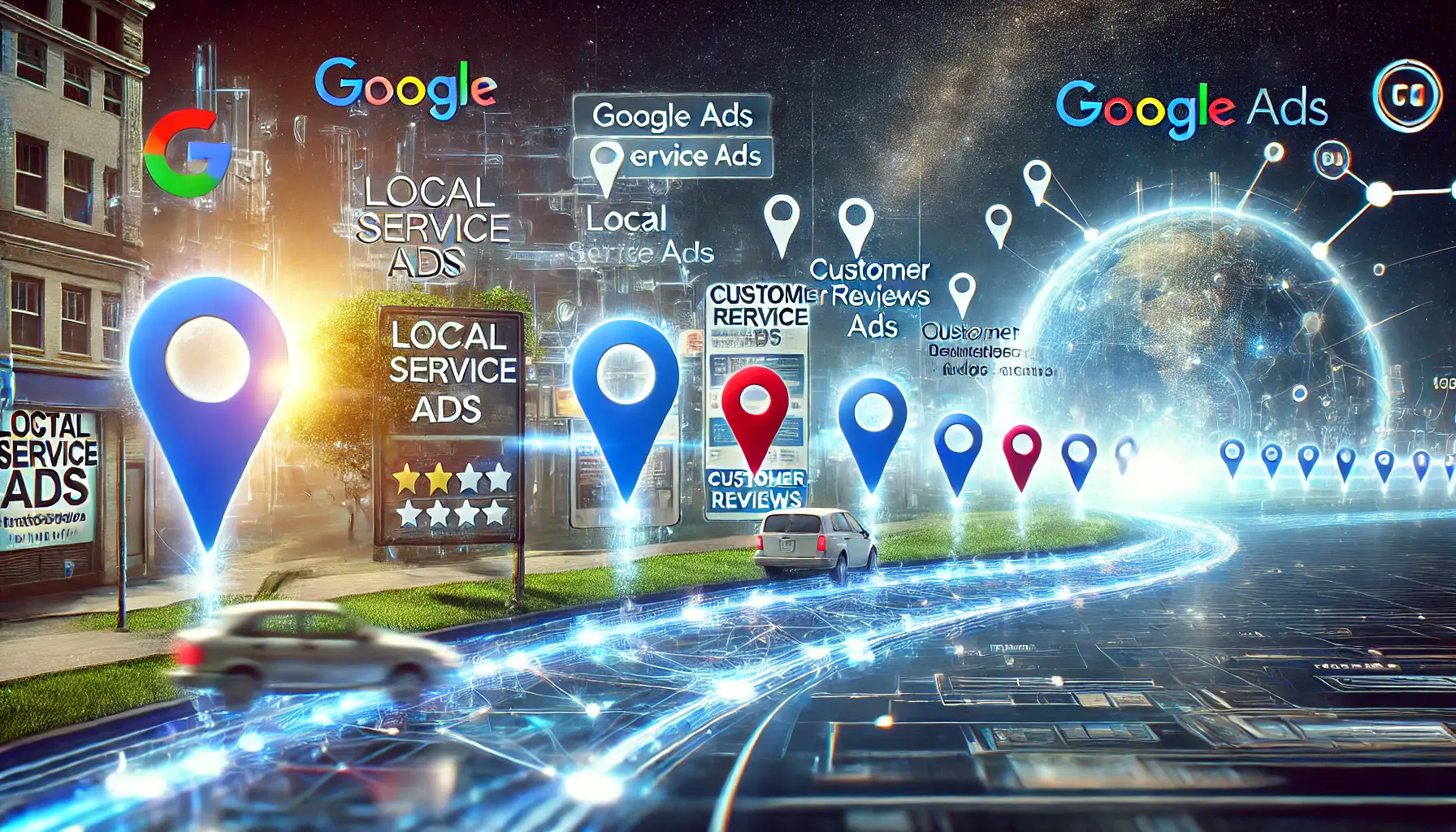
The evolution of Google Ads’ Local Service Ads from traditional to digital advertising, symbolizing the transformation of local service promotion.
The Evolution of Google Ads’ Local Service Ads
Since its launch in 2017, Local Service Ads have continually improved in their ability to connect local service providers with customers in their vicinity.
These ads have been enhanced over the years through the introduction of new features, broader reach, and better targeting.
Let’s take a closer look at how Local Service Ads have evolved and why they have become a powerful tool for any local business today.
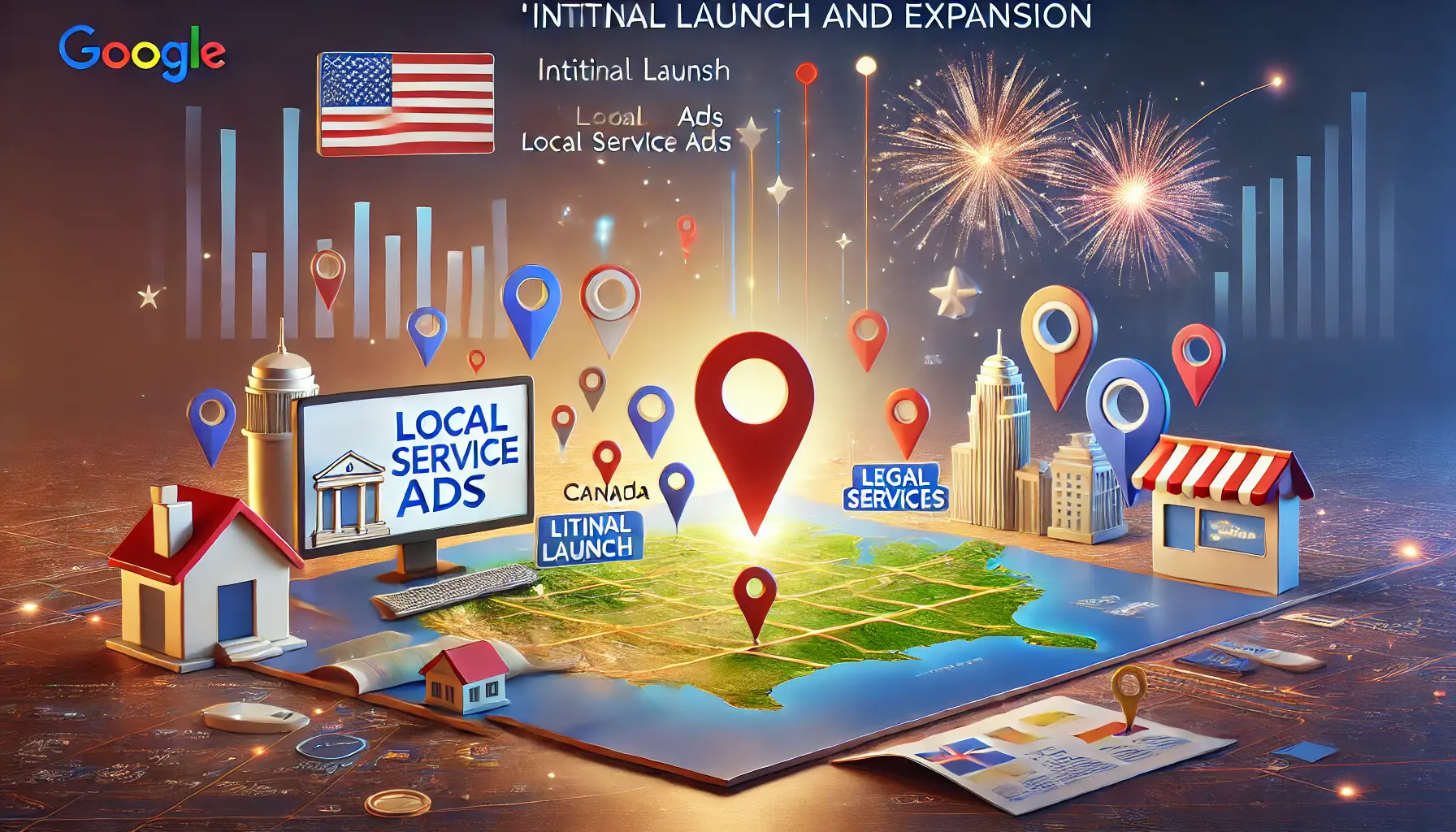
The initial launch and expansion of Google Ads’ Local Service Ads across different regions, highlighting growth and geographical spread.
Initial Launch and Expansion
Local Service Ads initially launched on a small scale, allowing Google to test the platform, gather feedback, and fine-tune the ad system for local businesses.
Early adopters faced little competition and were able to leverage this powerful lead generation tool before others.
Over time, Local Service Ads expanded to more cities and regions across the United States, Canada, and later to countries like the UK and Australia.
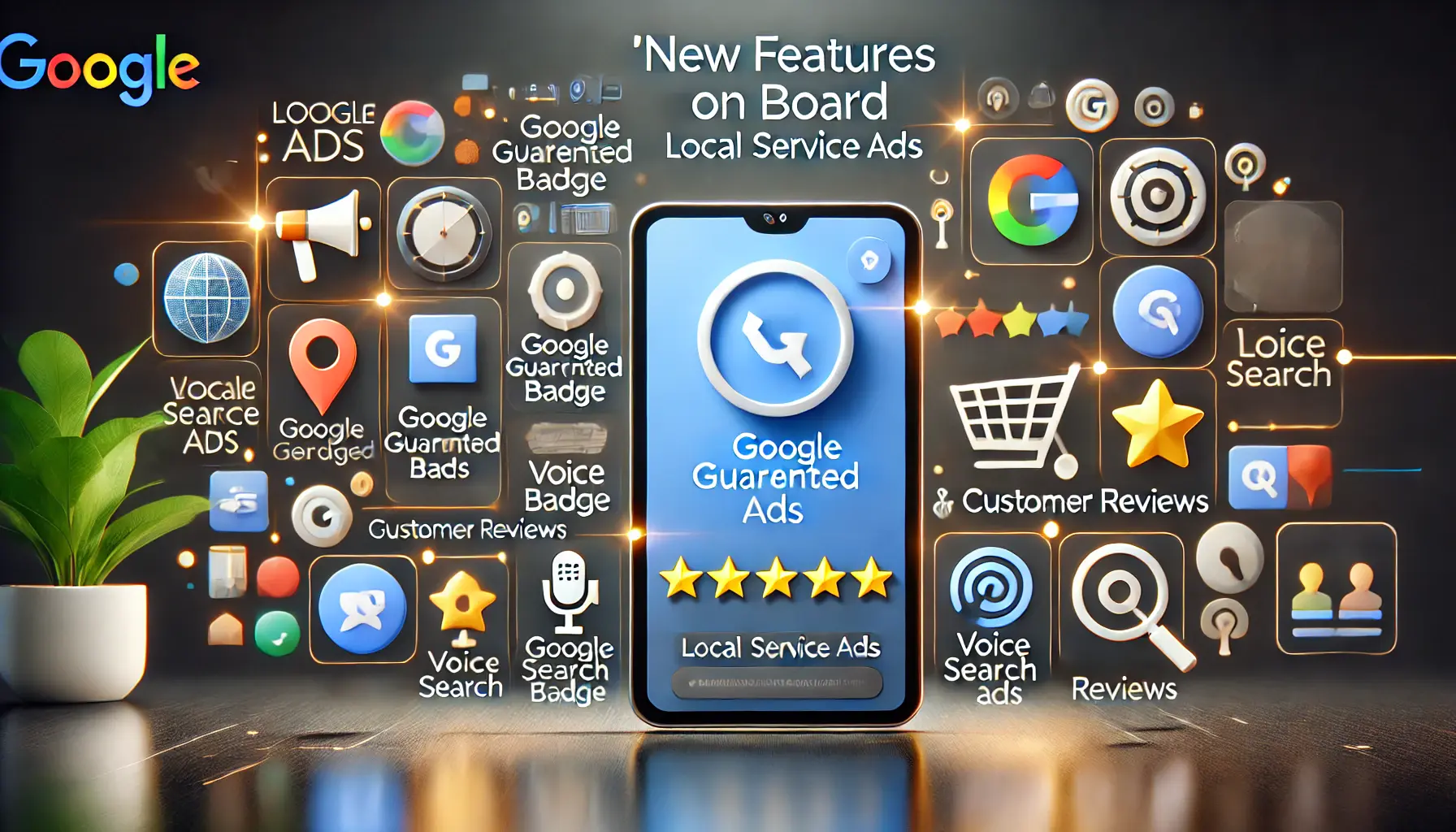
New features added to Google Ads’ Local Service Ads, including Google Guaranteed badges, voice search integration, and customer reviews.
New Features on Board
As the platform grew, Google introduced additional features to make Local Service Ads even more effective.
One such feature is the Google GuaranteedA program that provides customers with confidence that a business has passed Google's verification process. badge, which provides customers with extra confidence.
Businesses must meet certain requirements and offer consumer protection when services are booked through Local Service Ads.
Another significant update is the integration of voice searchTechnology that allows users to search the internet by speaking to a device., allowing users to find local service providers via Google AssistantA virtual assistant developed by Google that allows users to perform tasks and search via voice commands. and other voice-activated devices.
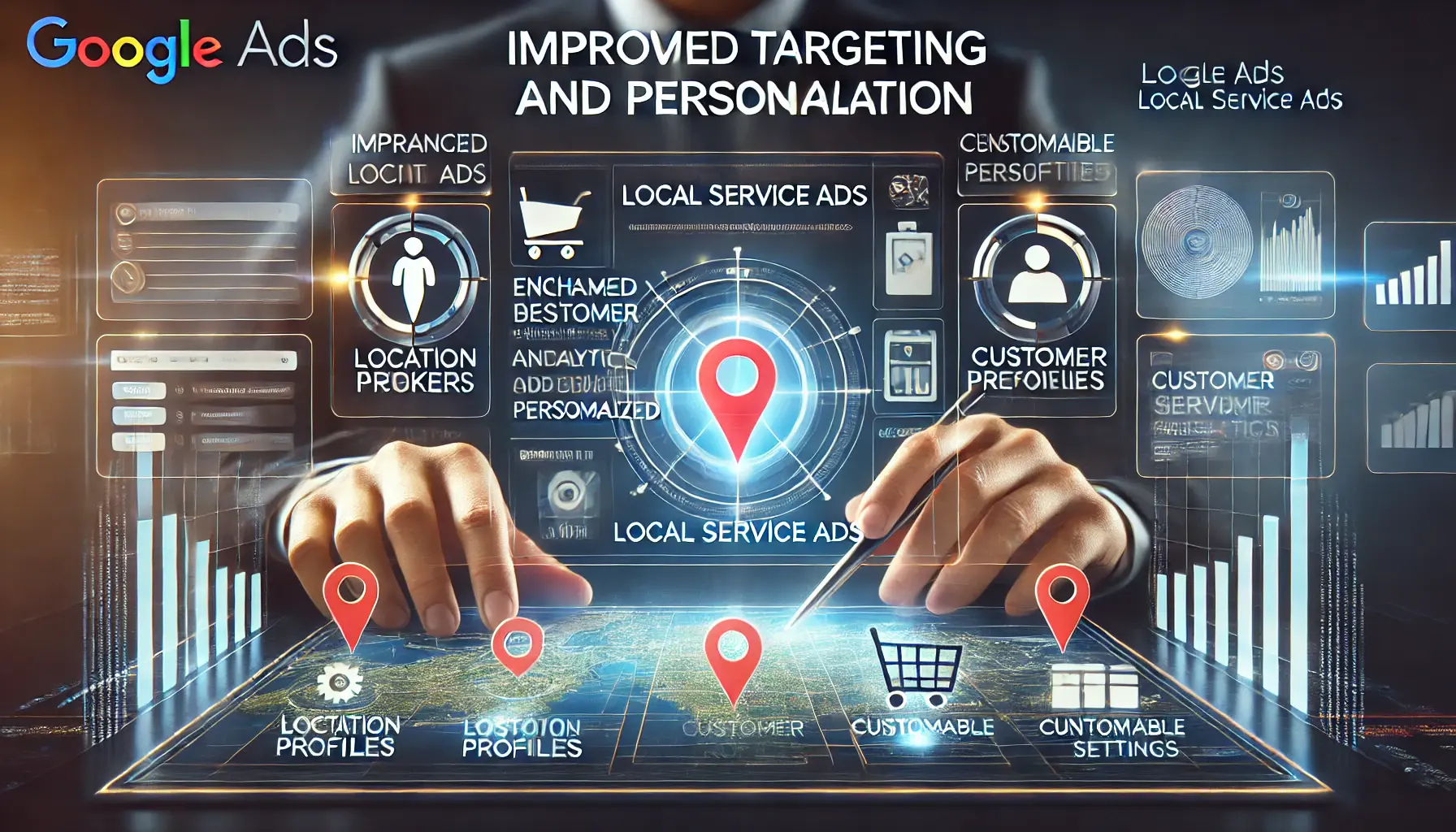
Enhanced targeting and personalization in Google Ads’ Local Service Ads, allowing for precise ad optimization.
Improved Targeting and Personalization
Over the last few years, Google has enhanced local targeting and personalization within Local Service Ads.
Businesses can now target ads based on location, specific services offered, and even customer reviews.
Additionally, in-depth performance metrics and real-time lead tracking allow businesses to make necessary adjustments to optimize their ads’ performance.
This helps companies reach their desired customer segments more effectively and create more value from their ad spend.
The evolution of Local Service Ads is ongoing, and businesses can expect further enhancements in the future.
These improvements make Local Service Ads a must-have tool for any local business looking to increase visibility and connect with customers seeking immediate services.
In the next section, we will explore the key benefits of using Local Service Ads and why they should be an essential part of any local business’s digital marketing strategy.

The key benefits of utilizing Local Service Ads, including increased visibility, trust, and local targeting for businesses.
Key Benefits of Utilizing Local Service Ads
Local Service Ads offer several significant advantages to businesses, especially those seeking clients from their local area.
These ads are not just another avenue for promoting your services; they ensure that the returns you gain are highly rewarding.
Let’s explore some of the key reasons why Local Service Ads have become a game-changer for local businesses.
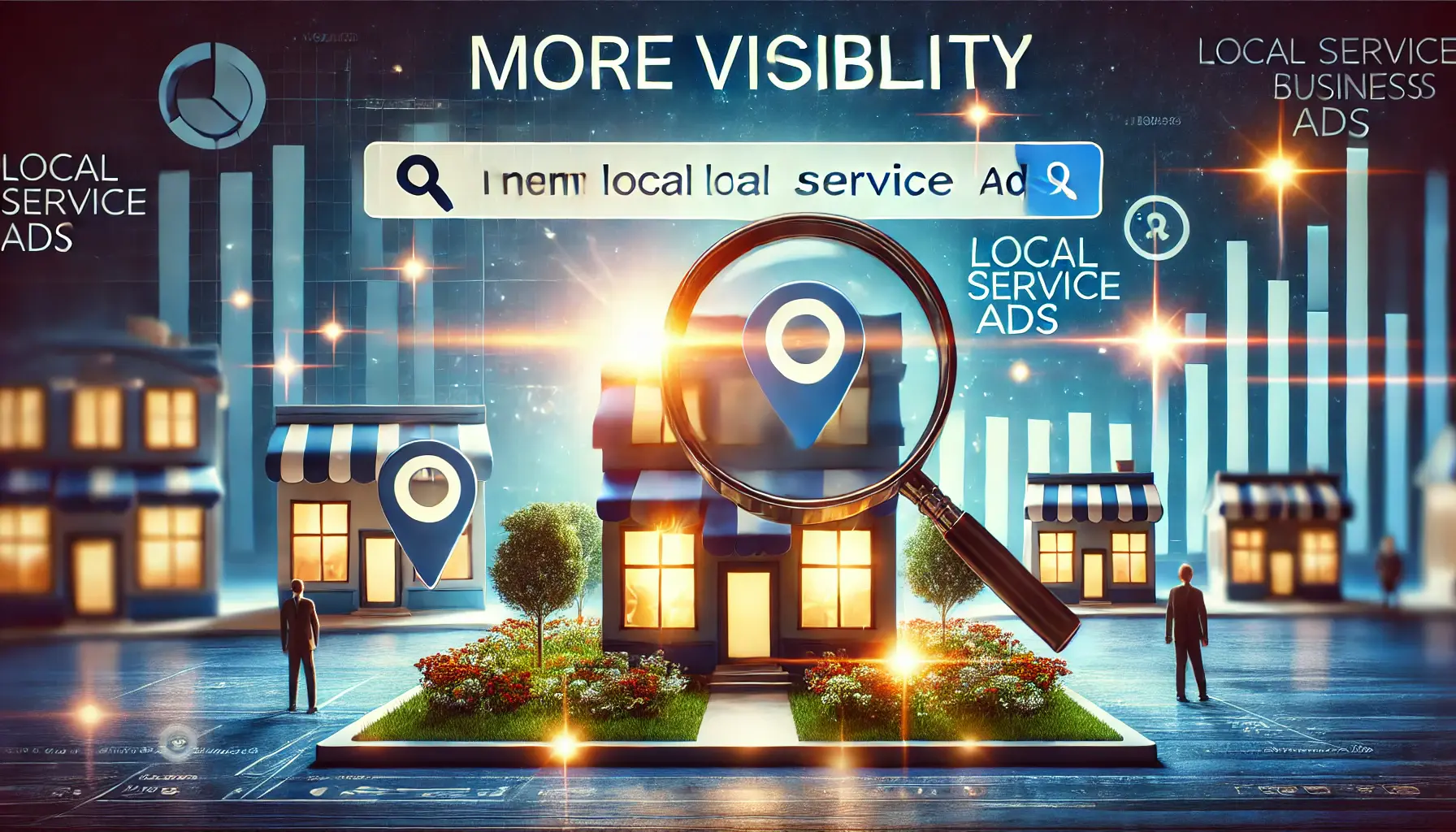
More visibility for local businesses through Local Service Ads, highlighting prominent placement in search results.
1. More Visibility
Local Service Ads bring your business to the top of Google search results.
This should be a key goal for every local company, as customers often select a business from the top results when searching for services in their area.
At this critical moment, when customers need your services, Local Service Ads ensure that your business is visible.

More visibility for local businesses through Local Service Ads, highlighting prominent placement in search results.
2. Trust and Credibility through Google Guaranteed
The Google Guaranteed badge that accompanies Local Service Ads adds an extra layer of trust.
With this badge, potential customers know that your business has been pre-screened by Google to meet certain quality standards.
In today’s digital landscape, where online trust is paramount, this badge can make a significant difference in converting leads into paying customers.
Additionally, the badge provides consumer protection, giving customers more confidence in your services.

Efficient pay-per-lead system in Google Ads, focusing on cost-effective lead generation for businesses.
3. Efficiency in Pay-Per-Lead
Unlike traditional ad models where you pay per click, Local Service Ads operate on a pay-per-lead model.
This means you only pay when a customer directly contacts your business through the ad.
This ensures that your budget is being spent on generating real leads, not just general traffic.
This model is highly cost-effective and helps you manage your advertising spend more efficiently.
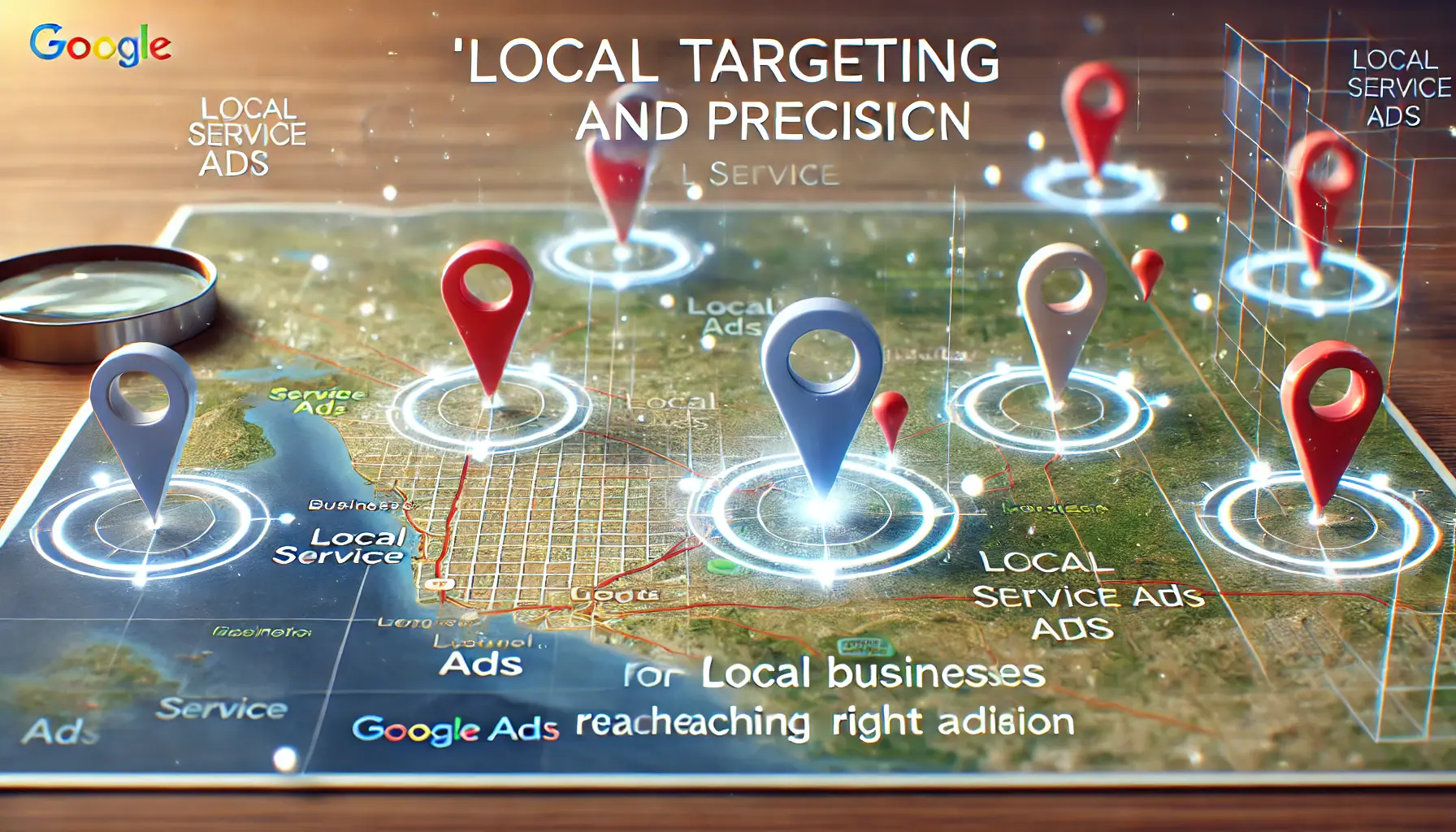
Precise local targeting for businesses using Google Ads, showing targeted areas on a digital map for optimal reach.
4. Local Targeting and Precision
With Local Service Ads, you have the ability to target specific locations and service areas, ensuring that your ads are shown to customers geographically close to your business.
This precise local targeting is especially beneficial for service providers who operate within a specific area.
Furthermore, the ads allow for granular personalization, enabling you to highlight the specific services you offer and showcase customer reviews to enhance credibility.

Generating high-quality leads and achieving better ROI through Google Ads’ Local Service Ads.
5. High-Quality Leads and Better ROI
Since customers find your business when they are actively searching for the services you provide, Local Service Ads generate higher quality leads.
These potential customers are already in need of your services, making them more likely to convert.
As a result, this leads to a better return on investment compared to more general ad formats.
Additionally, through the Local Service Ads platform, businesses can manage leads and customer interactions, improving lead management and boosting conversion rates.
Some of the core benefits of Local Service Ads include:
- Prime positioning at the top of search results
- Increased trust through Google’s vetting process
- Cost-effective pay-per-lead model
- Targeted reach to local customers
- Higher quality leads that are more likely to convert
All these factors make Local Service Ads an essential tool for local businesses looking to stand out in their market and generate high-quality leads.
In the next section, we’ll focus on how to optimize Local Service Ads for the best possible performance.
Local Service Ads offer prime visibility, trust, and high-quality leads for businesses.

Optimizing Local Service Ads for peak performance through fine-tuned ad metrics and performance graphs.
Local Service Ads Optimization for Peak Performance
While there are great benefits associated with Local Service Ads, perfecting them requires attention to several optimization elements.
Starting with ad setup and continuing with ongoing strategy refinement, a series of best practices can ensure your ads are running at peak performance.
Here’s how to optimize your Local Service Ads for maximum results.

Setting up a business profile correctly in Google Ads’ Local Service Ads to ensure accurate and professional visibility.
1. Set Up Your Business Profile Correctly
The first step to optimizing your Local Service Ads is setting up your business profile correctly.
Make sure that all details, from your business name, contact information, services offered, to operating hours, are accurate.
It’s essential to select the correct categories and service areas to ensure your ads reach the right customers.
Accurate information allows potential customers to contact you easily and helps Google rank your ads correctly for relevant searches.

Encouraging customer reviews to build trust and engagement for local businesses.
2. Encourage Customer Reviews
Customer reviews are crucial for building trust and credibility.
Businesses with positive reviews tend to perform better in Local Service Ads because these reviews are prominently displayed in the ad itself.
Encourage satisfied customers to leave reviews and make sure to respond to feedback, whether positive or negative.
Google rewards businesses with active, engaged customers, and high ratings can significantly boost your ad performance.

Monitoring and managing leads effectively with real-time tracking and response tools in Google Ads’ Local Service Ads.
3. Monitor and Manage Your Leads
Once your Local Service Ads are live, it’s important to actively monitor and manage your leads.
Google provides a dashboard where you can track customer interactions, such as phone calls and messages.
Promptly responding to leads increases your chances of converting inquiries into paying customers.
The faster and more efficiently you manage your leads, the better your overall ad performance will be.
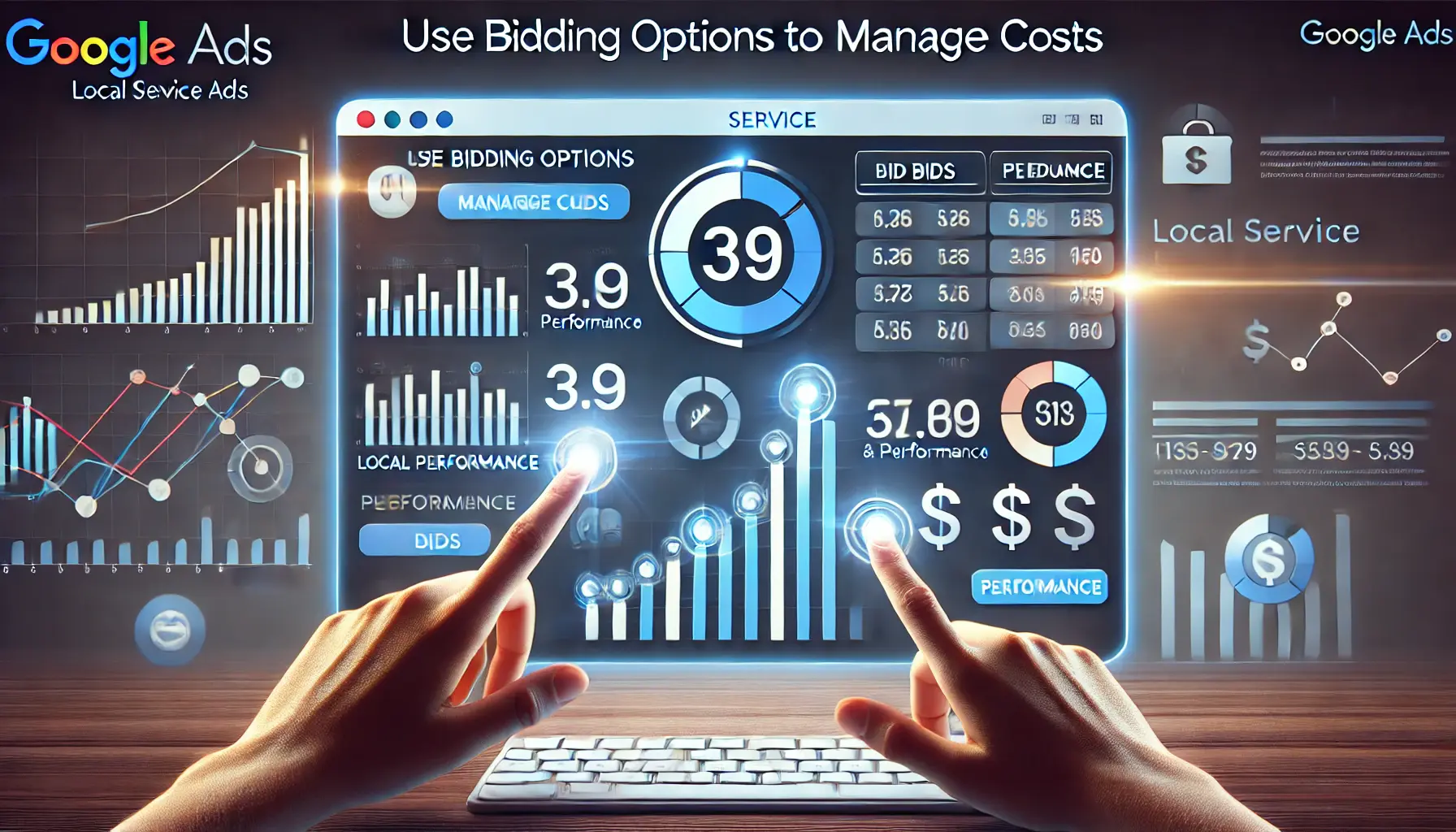
Using bidding options in Google Ads to manage costs efficiently and optimize ad performance.
4. Use Bidding Options to Manage Costs
What’s crucial is finding the right balance between setting a budget that works for your business and bidding high enough to remain competitive.
Google provides flexible bidding options to help you optimize towards your goals—whether that’s maximizing leads or staying within a specific cost-per-lead target.
Regularly reviewing your budget and bid strategy ensures your ads are delivering the best possible results.
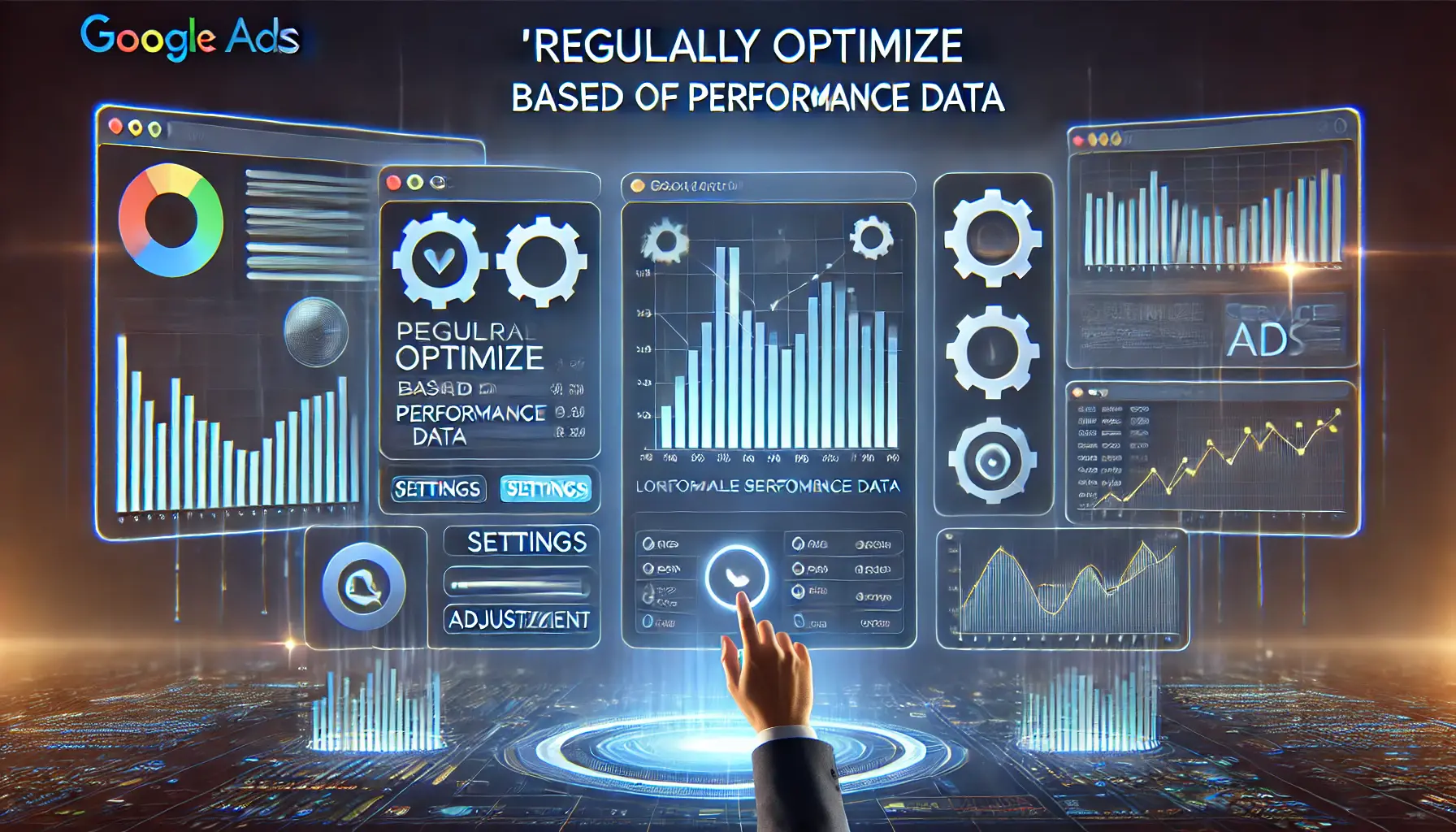
Regularly optimizing Local Service Ads based on performance data to improve efficiency and results.
5. Regularly Optimize Based on Performance Data
Finally, optimizing your Local Service Ads requires continuous attention to performance data.
Google provides insights into how your ads are performing, including which leads are converting and which are not.
Regularly reviewing this data helps you identify areas for improvement.
For example, if you notice certain services are generating more leads, you can adjust your strategy to focus more on those areas.
If a particular location isn’t performing well, you can refine your targeting to capture more lucrative areas.
To summarize, here are some key tips for optimizing Local Service Ads:
- Ensure accurate business profile setup
- Encourage and manage customer reviews
- Respond to leads quickly
- Use bidding options to control costs effectively
- Continuously optimize based on performance data
By following these optimization tips, you can maximize the potential of your Local Service Ads, attract more high-quality leads, and ultimately increase your return on investment.
Next, we’ll discuss the future of Local Service Ads and how upcoming trends will shape the way local businesses advertise online.

The future of Local Service Ads, featuring AI integration, voice search, and expanding global reach within Google’s advertising ecosystem.
What the Future Holds: How Local Service Ads Will Continue to Fit into Google’s Advertising Landscape
As digital advertising continues to evolve, Local Service Ads will play an even greater role in how businesses connect with local customers.
With ongoing developments, new technologies, and emerging trends, Local Service Ads are poised for significant improvements.
Let’s look at some trends that are likely to shape the future of Local Service Ads with increasing momentum.

Artificial Intelligence and automation enhancing efficiency in Google’s Local Service Ads through advanced targeting and performance analysis.
1. Increased Use of Artificial Intelligence and Automation
Artificial intelligence (AIArtificial Intelligence; technology that simulates human intelligence in machines.) is becoming increasingly integrated into digital advertising.
Google is already incorporating AI into its ad platforms, and Local Service Ads will continue to benefit from these advancements.
This will lead to better audience targeting, more personalized ad experiences, and automated lead management.
Businesses that leverage AI will ensure that their Local Service Ads are optimized for the right audience at the right time, with minimal manual intervention.

Expansion of Google’s Local Service Ads to cover more industries and services, increasing reach and connectivity.
2. Expansion to More Industries and Services
As the platform continues to grow, it is expected that more industries and services will come under the umbrella of Local Service Ads.
This expansion will create new opportunities for a wider range of businesses to reach local customers more effectively, offering an even greater variety of services.
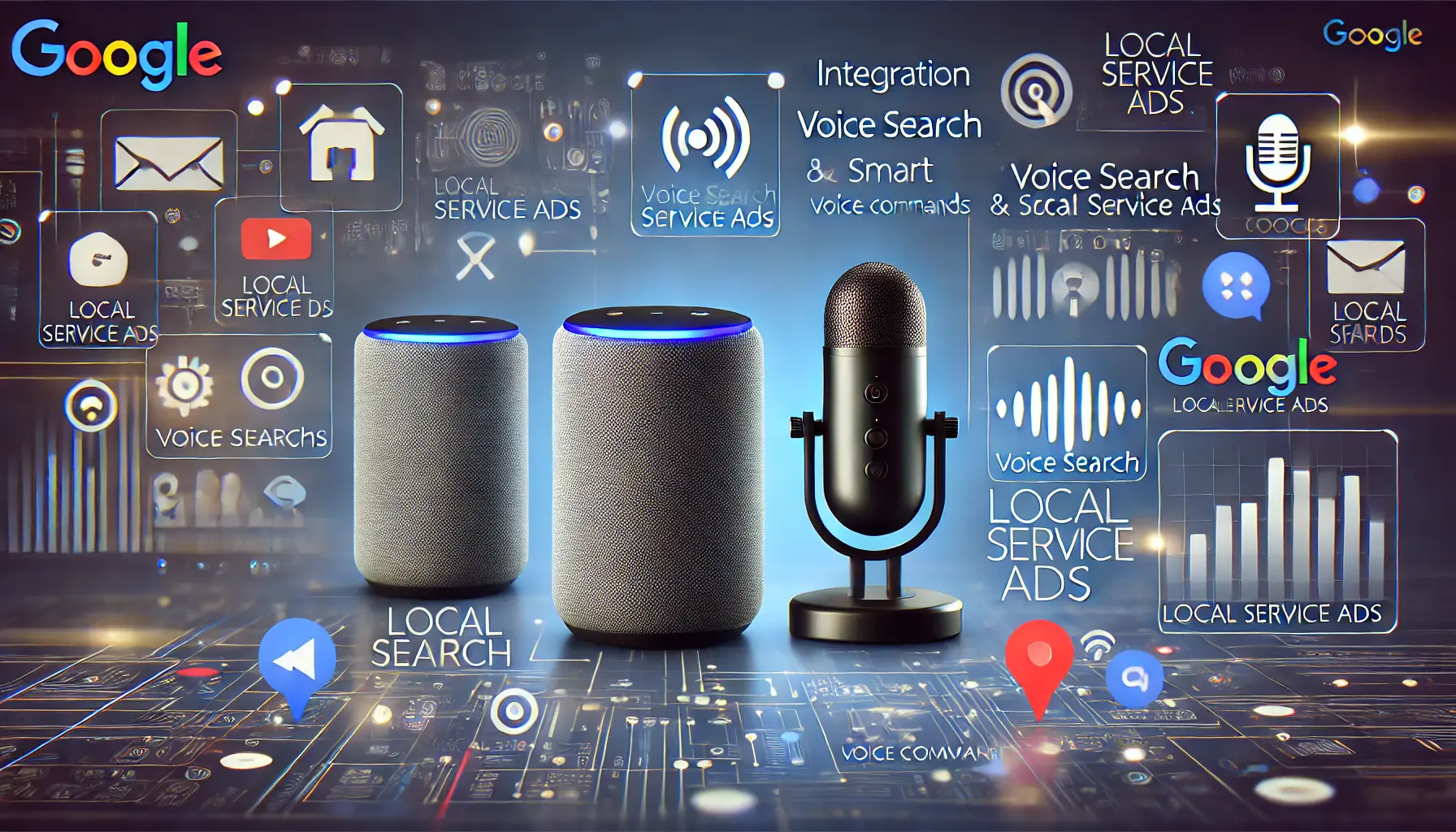
Seamless integration of voice search and smart devices with Google’s Local Service Ads, connecting users to local services.
3. Integration of Voice Search and Smart Devices
With the increasing trend of voice search and the use of smart devices like Google Home and Amazon Alexa, this is likely to influence the future performance of Local Service Ads.
More consumers are using voice commands to find local services, and businesses will need to optimize their Local Service Ads to appear in the results for these queries.
This integration will help local businesses capture customers who are looking for quick, voice-activated solutions.
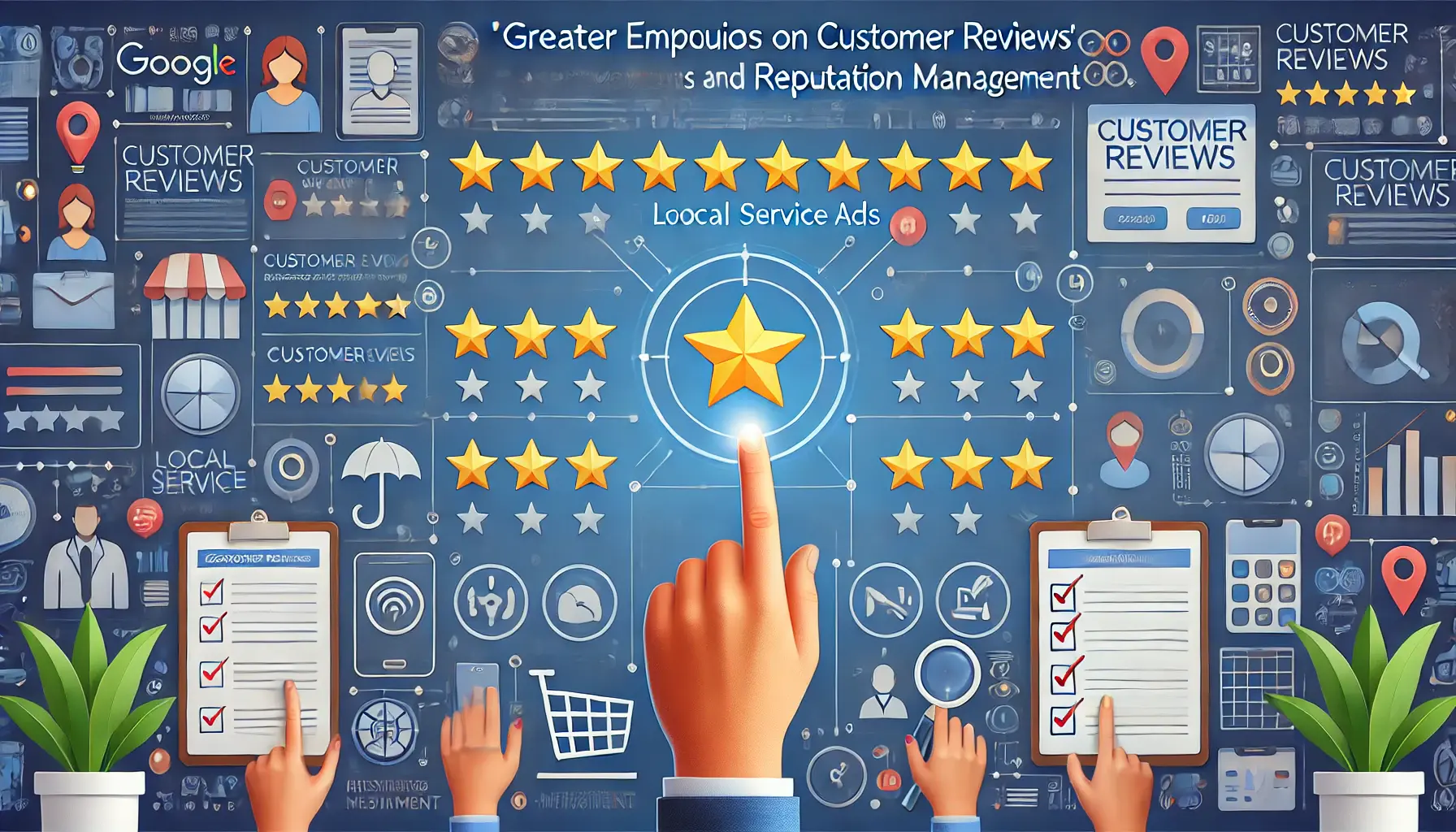
Managing customer reviews and reputation in Google’s Local Service Ads to build trust and credibility.
4. Greater Emphasis on Customer Reviews and Reputation Management
Customer reviews have always been important for Local Service Ads, but moving forward, we can expect an even greater emphasis on reputation management.
Google is likely to give more visibility to businesses with strong reviews, while those with poor ratings may see reduced visibility in search results.
This will require businesses to take an active role in managing their online reputation by responding to customer feedback and encouraging positive reviews to maintain strong ad performance.

Enhanced data privacy and compliance in Google’s Local Service Ads, focusing on security and trust.
5. Enhanced Data Privacy and Compliance
As data privacy regulations continue to evolve, businesses will need to comply with stricter privacy laws when running Local Service Ads.
While Google has already implemented tools to protect user data, more features and compliance tools are expected to keep businesses aligned with both local and international privacy laws.
This focus on privacy will ensure businesses can continue running ads while safeguarding customer information.
The future of Local Service Ads is bright, with advancements in AI, industry expansion, voice search integration, reputation management, and data privacy.
As these trends continue to shape the digital advertising landscape, businesses that adapt and optimize their Local Service Ads will be well-positioned to reach local customers and grow their presence in the market.

Maximizing the impact of Local Service Ads through performance optimization, high-quality leads, and growth.
Conclusion: How to Maximize Impact with Local Service Ads
Throughout the article, we have discussed the many ways that Local Service Ads have become such a robust tool for local businesses looking to connect with nearby customers.
From understanding their evolution to learning how to optimize them for peak performance, Local Service Ads provide the competitive edge needed in today’s digital advertising space.
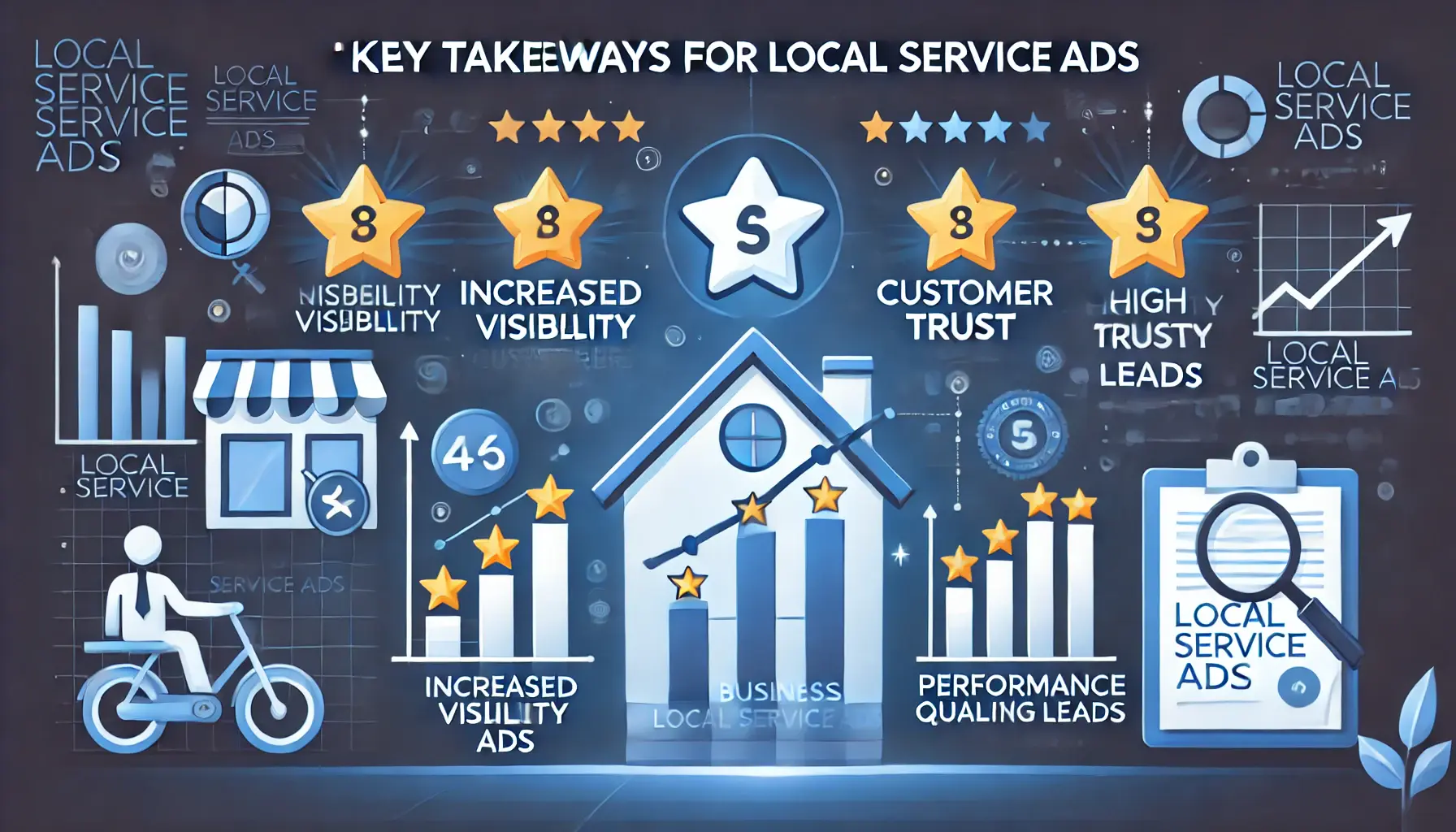
Key takeaways from Local Service Ads include increased visibility, customer trust, and growth for businesses.
Key Takeaways for Local Service Ads
Local Service Ads offer a number of benefits to businesses, enabling them to gain significant momentum and thrive in today’s highly competitive market.
These ads help businesses enhance visibility, build trust with customers, and generate high-quality leads.
Here are some key takeaways:
- Prime visibility at the top of Google search results ensures that local businesses are seen by customers when they are searching for services.
- Google Guaranteed badges and customer reviews enhance trust and credibility, making it easier to convert leads into paying customers.
- The pay-per-lead model is cost-efficient, ensuring that businesses pay only for actual customer inquiries, not for clicks or views.
- Precise local targeting allows businesses to appear in front of the right audience at the right time, increasing the likelihood of conversion.
- Ongoing optimization through performance data ensures that ads remain effective and deliver high returns on investment.

Optimizing Local Service Ads for long-term success through strategic performance and growth management.
Optimizing Local Service Ads for Long-Term Success
If businesses want to get the most out of Local Service Ads, then optimization is absolutely key.
This includes everything from setting up business profiles correctly and encouraging customer reviews to adjusting strategies over time based on data-driven insights.
With the advent of AI and other automation components, including voice search integrations, businesses can further streamline the management and targeting of their ads, reducing manual work and boosting performance.

The future of Local Service Ads with advanced technology like AI, voice search, and global connectivity driving growth.
The Future of Local Service Ads
A bright future with extensive possibilities lies ahead for the ever-evolving and growing Local Service Ads.
Expanding industries, further integrations with voice search and smart devices, and increasing focus on customer reviews and data privacy will shape the future of these ads.
Businesses that can adapt to such changes will be better positioned to scale their presence in the market.
By staying at the forefront of trends and continuously working toward effective ad optimization, businesses can maximize their potential and achieve long-term success with Local Service Ads in their local markets.
Whether you are just starting with Local Service Ads or refining your strategy, following the best practices outlined in this article will help you optimize this powerful advertising tool for the best possible outcomes.
To maximize impact, businesses must continuously optimize and adapt to emerging trends.

Answering common questions about Local Service Ads through an informative and user-friendly digital interface.
Your campaigns can be managed by an agency specialized in Google Ads, check out our service page.
Local Service Ads FAQs
The following are some of the most common questions our customers have asked about Local Service Ads and how this approach can benefit your business.
Local Service Ads were developed to help Google connect local service providers with nearby customers.
Appearing at the top of search results, these ads follow a pay-per-lead model, ensuring you only pay for the leads you receive.
Local Service Ads help businesses appear at the top of Google search results.
You only pay when customers contact you through the ad.
These ads are highly targeted, based on location and the services your business offers.
Key benefits of using Local Service Ads include premium visibility, increased customer trust through Google Guaranteed badges, quality leads, and a cost-effective pay-per-lead model.
These ads provide superior local targeting and higher conversion rates.
Local Service Ads operate on a pay-per-lead basis, meaning you only pay when a customer contacts your business via the ad.
The actual cost per lead varies depending on the service category and the competition in your area.
The Google Guaranteed badge is given to businesses that pass Google’s verification process.
This badge provides customers with confidence in the business’s quality standards and offers consumer protection, enhancing trust and credibility.
Local Service Ads are currently available for industries such as home services, legal services, real estate, and healthcare.
Google is continuously expanding the range of businesses that can leverage this ad format.
To optimize Local Service Ads, set up your business profile accurately, encourage customer reviews, and proactively manage leads.
Regularly refine your bid strategy based on performance data to improve ad performance and ROIReturn on Investment; a measure of the profitability of an investment..
Leads generated from Local Service Ads are tracked through Google’s dashboard, where you can monitor interactions such as phone calls and messages.
This system helps you manage and respond to leads promptly.













